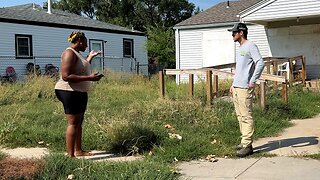Premium Only Content

Chemotherapy: The Hidden Risks You Should Know About
Chemotherapy can stop cancer cells from replicating, but it comes with a cost many don’t realize: it accelerates aging in the body, which is one of the root causes of cancer itself.
Here’s a quick breakdown of what happens when chemotherapy-induced senescence takes place:
1 Alters the Tumor Environment: Chemotherapy increases what’s called Senescence-Associated Secretory Phenotype (SASP), which releases growth factors and cytokines that make the tumor’s microenvironment more favorable for cancer progression.
2 Harder to Treat: It promotes tumor heterogeneity—meaning different cancer cell types emerge within the tumor, making it tougher to treat and more likely to resist therapies.
3 Resistance Grows: Chemo leads to resistance, especially in cancer stem cells, creating therapy-resistant clones that continue to thrive despite treatment.
4 Cancer Adapts: Over time, cancer cells adapt to chemotherapy, developing lifelong resistance, making it harder to treat in the future.
At Williams Cancer Institute, we avoid these harmful effects by using Intratumoral Therapy, a more advanced and targeted approach that eliminates cancer cells without promoting aging or resistance. This therapy offers patients a powerful alternative to conventional treatments that can do more harm than good.
Take control of your health and explore the benefits of a more personalized, less invasive approach to cancer treatment.
Supporting Evidence:
Guillon J, Petit C, Toutain B, Guette C, Lelièvre E, Coqueret O. Chemotherapy-induced senescence, an adaptive mechanism driving resistance and tumor heterogeneity. Cell Cycle. 2019 Oct;18(19):2385-2397. doi: 10.1080/15384101.2019.1652047.
#ChemoFree #IntratumoralTherapy #CancerCare #NoChemo #TargetedTherapy #CancerTreatmentOptions #CancerFacts #WilliamsCancerInstitute #PrecisionOncology #CancerAwareness #IntegrativeOncology
-
 LIVE
LIVE
Nerdrotic
3 hours ago $3.49 earnedGobekli Tepe Coverup, Pyramid Structures w/ Jimmy Corsetti & Wandering Wolf | Forbidden Frontier 096
1,473 watching -
 LIVE
LIVE
SpartakusLIVE
2 hours ago#1 Action HERO ends your weekend in a FIERY BLAZE of non-stop GLORY
653 watching -
 LIVE
LIVE
The Sufari Hub
1 hour ago🔴ELDEN RING MODDED - ROAD TO #1 GAMER ON RUMBLE - #RumbleGaming
98 watching -
 54:47
54:47
Sarah Westall
4 hours agoTranshumanism vs Natural Human Zones, AI consciousness and the Hive Mind Future w/ Joe Allen
23.6K5 -
![[LIVE] The Sunday Surprise! | Counter Strike w/ Omega (Meisters Madness)](https://1a-1791.com/video/fww1/70/s8/1/U/P/W/x/UPWxy.0kob-small-LIVE-The-Sunday-Surprise-A-.jpg) LIVE
LIVE
Joke65
1 hour ago[LIVE] The Sunday Surprise! | Counter Strike w/ Omega (Meisters Madness)
124 watching -
 LIVE
LIVE
MaverickLIVE
1 hour agoFirst Rumble Stream!
103 watching -
 LIVE
LIVE
xTimsanityx
5 hours ago🟢LIVE: COACH ALWAYS TOLD ME, "SHOOTERS SHOOT" | GOONING ON E-DISTRICT
48 watching -
 32:19
32:19
SB Mowing
2 days agoThis yard was putting KIDS IN DANGER - Now they can SAFELY play outside again
15.7K22 -
 LIVE
LIVE
Lofi Girl
2 years agolofi hip hop radio 📚 - beats to relax/study to
626 watching -
 47:41
47:41
Tactical Advisor
5 hours agoMake Your AR15 into a Bullpup/New Thermals | Vault Room Live Stream 018
39.9K13